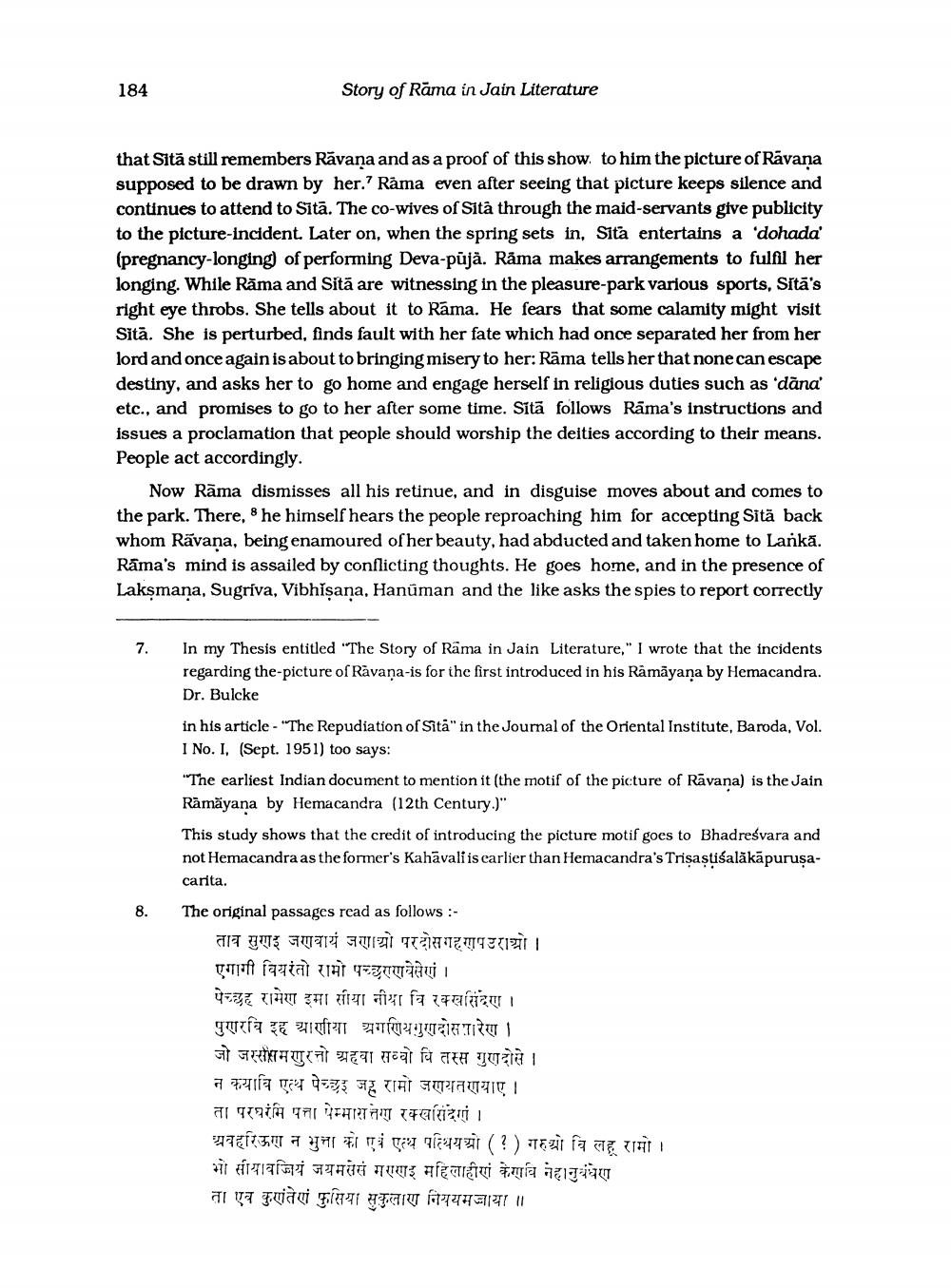________________
184
that Sitä still remembers Rāvana and as a proof of this show. to him the picture of Ravana supposed to be drawn by her.' Rama even after seeing that picture keeps silence and continues to attend to Sita. The co-wives of Sita through the maid-servants give publicity to the picture-incident. Later on, when the spring sets in, Sita entertains a 'dohada' (pregnancy-longing) of performing Deva-pūjā. Rāma makes arrangements to fulfil her longing, While Räma and Sita are witnessing in the pleasure-park various sports, Sita's right eye throbs. She tells about it to Rama. He fears that some calamity might visit Sită. She is perturbed, finds fault with her fate which had once separated her from her lord and once again is about to bringing misery to her: Rāma tells her that none can escape destiny, and asks her to go home and engage herself in religious duties such as 'dana' etc., and promises to go to her after some time. Sita follows Rama's instructions and issues a proclamation that people should worship the deities according to their means. People act accordingly.
Story of Rama in Jain Literature
Now Rama dismisses all his retinue, and in disguise moves about and comes to the park. There," he himself hears the people reproaching him for accepting Sită back whom Ravana, being enamoured of her beauty, had abducted and taken home to Lankā. Rama's mind is assailed by conflicting thoughts. He goes home, and in the presence of Laksmana, Sugriva, Vibhiṣaṇa, Hanuman and the like asks the spies to report correctly
7.
8.
In my Thesis entitled "The Story of Rama in Jain Literature," I wrote that the incidents regarding the-picture of Ravana-is for the first introduced in his Rāmāyaṇa by Hemacandra. Dr. Bulcke
in his article - "The Repudiation of Sita" in the Journal of the Oriental Institute, Baroda, Vol. I No. I, (Sept. 1951) too says:
"The earliest Indian document to mention it (the motif of the picture of Ravana) is the Jain Ramayana by Hemacandra (12th Century.)"
This study shows that the credit of introducing the picture motif goes to Bhadresvara and not Hemacandra as the former's Kahavali is earlier than Hemacandra's Triṣaṣṭiśalākāpuruṣa
carita.
The original passages read as follows:
ताव सुरगइ जणवायं जगाओ परदोस गणप उरायो । एमागी विवरंतो रामो पराले।
पेच्छह रामेण इमा सीया नीया वि रक्खसिंदे । पुणरवि इह याणीया अगणियगुणदोसारेण । जो जस्ससम गुरतो श्रवा सव्वो वि तस्स गुणदोसे |
न कयावि एत्थ पेच्छ जह रामो जायतण्याए । ता परघरंमि पत्ता पेम्मारात्तेरा रक्खशिंदे |
श्रवहरिऊन भुत्ता को एवं एत्थ पत्थिय ( ? ) गोवि लहू राम्रो । भोसीययजियजयम गएर महिलाही के नेहा ता एवं कुतेां कुसिया कुलारा निययमज्जाया ॥




